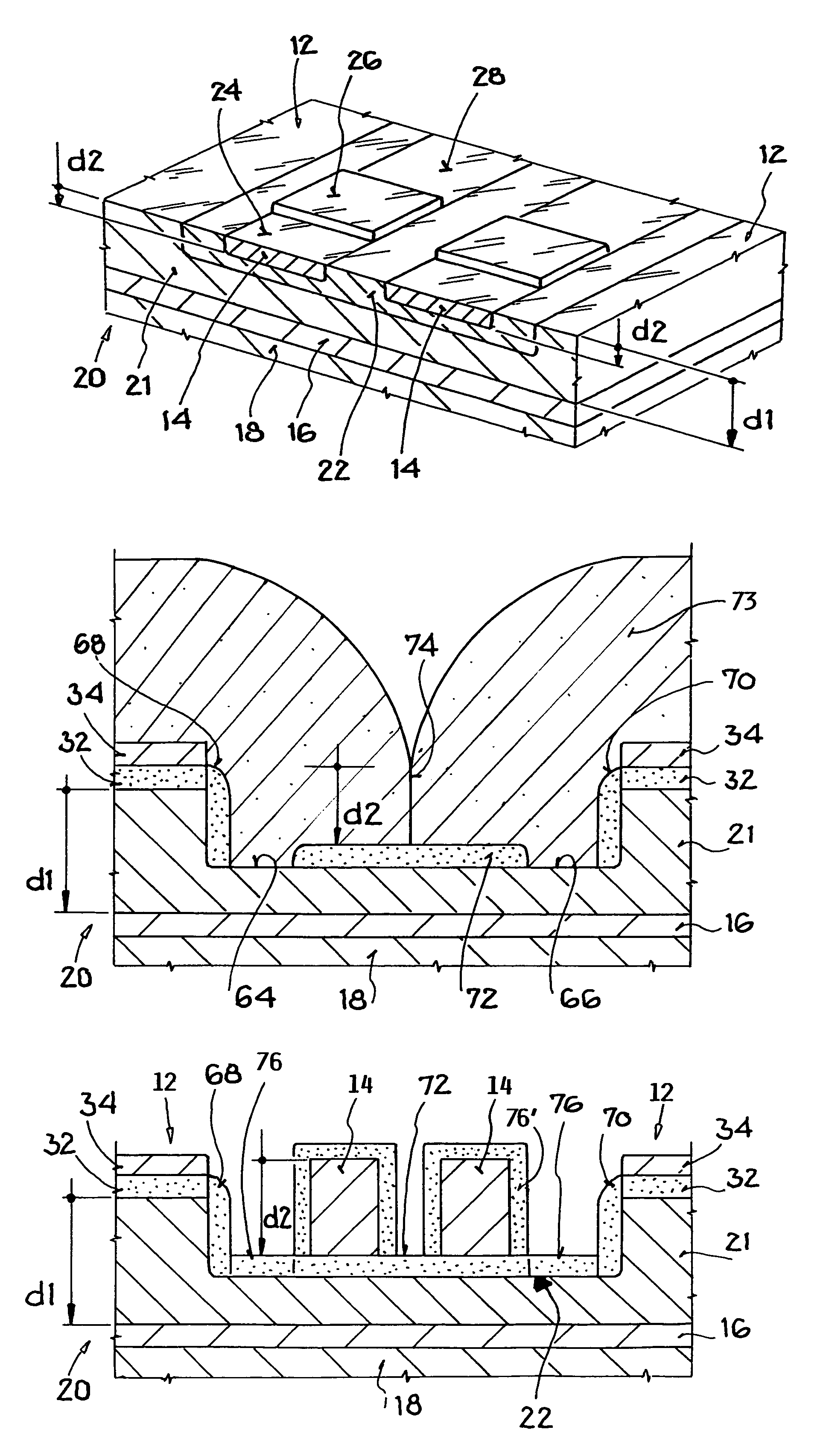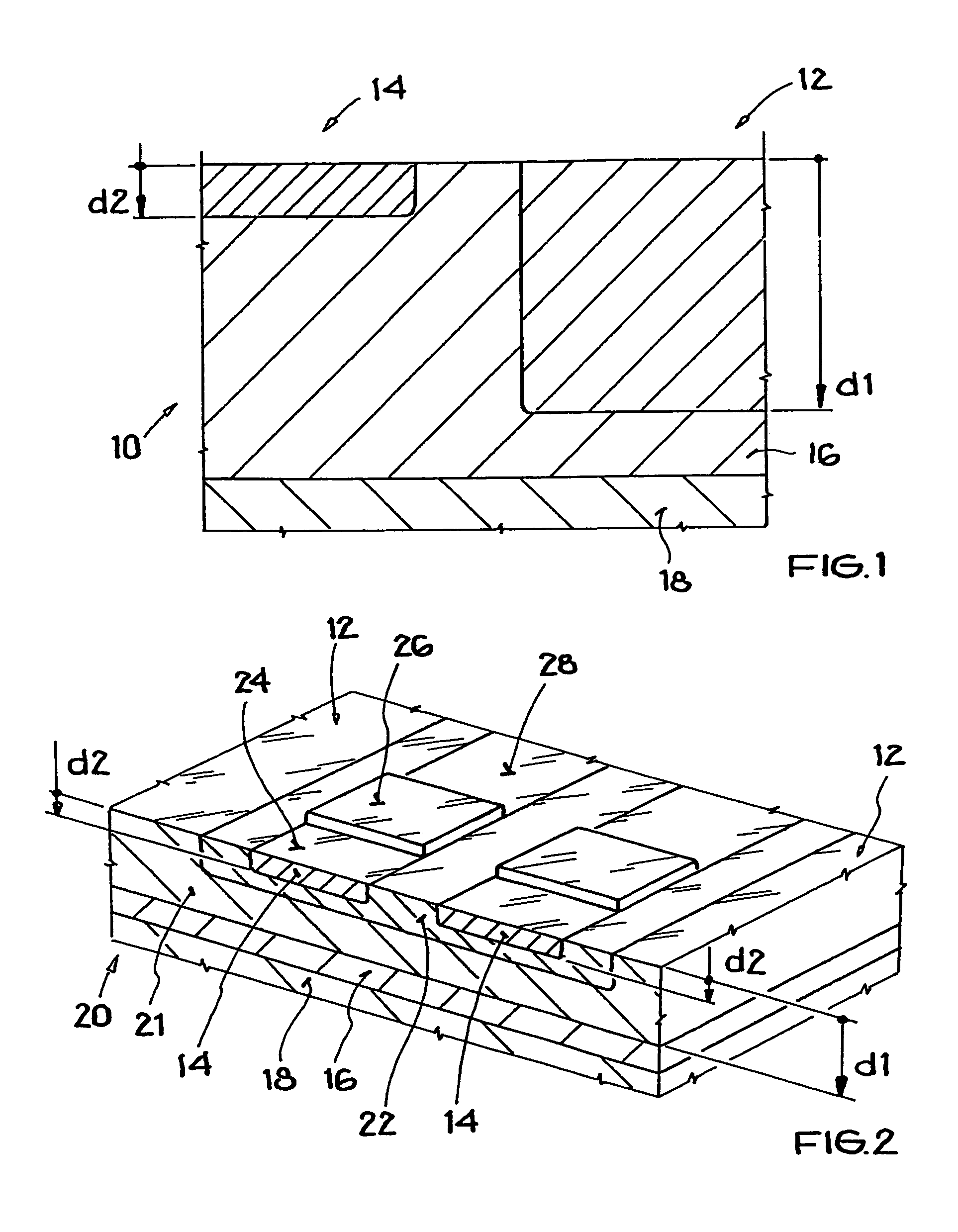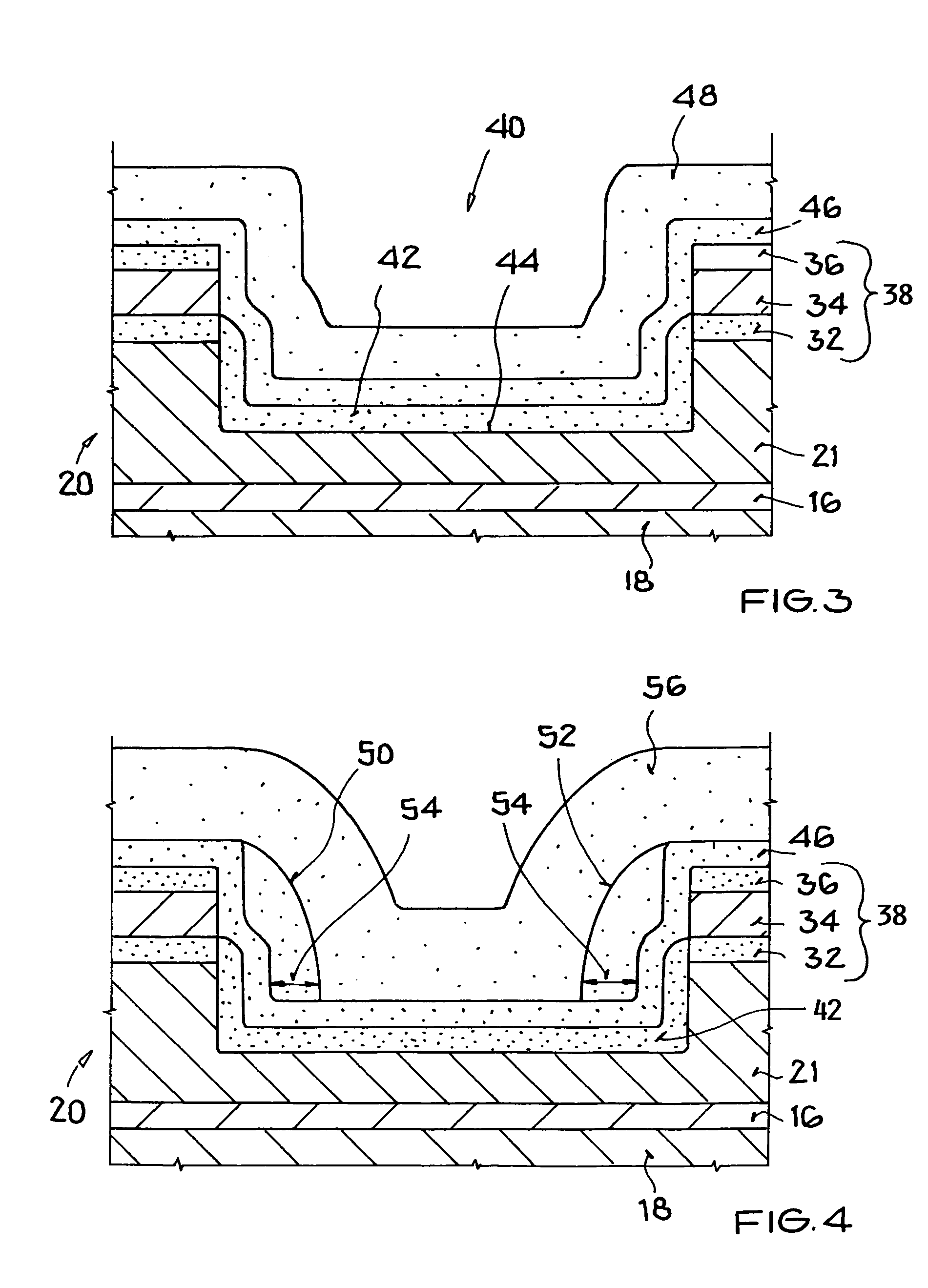Method of producing active semiconductor layers of different thicknesses in an SOI wafer
a technology of active semiconductor and soi wafer, which is applied in semiconductor/solid-state device manufacturing, electric devices, solid-state devices, etc., can solve the problems of limited structural resolution, complex structure, and inability to dielectrically isolate vertical dmos transistor cells, and achieve high packing density, limited structural resolution, and high breakdown or breakthrough field strength
- Summary
- Abstract
- Description
- Claims
- Application Information
AI Technical Summary
Benefits of technology
Problems solved by technology
Method used
Image
Examples
Embodiment Construction
[0043]FIG. 1 shows a cross-section of a portion of an SOI wafer 10, which includes first and second active regions 12 and 14 of active semiconductor material, whereby these two regions respectively have different thicknesses. Namely, the first active region 12 has a comparatively large thickness d1, while the second active region 14 has a comparatively smaller thickness d2. The two active regions 12 and 14 are embedded in an insulating dielectric layer 16, which extends on an underlying handle or handling layer 18.
[0044]Due to its comparatively small thickness d2, the second active region 14 is especially well suited to the fabrication of CMOS elements. In order to avoid leakage currents and therewith power losses in the second active region 14, and in order to prevent parasitic capacitances, the thickness d2 should amount to 200 nm for example. On the other hand, the first active region 12 with its comparatively large thickness d1 is especially adapted or well suited to the fabrica...
PUM
 Login to View More
Login to View More Abstract
Description
Claims
Application Information
 Login to View More
Login to View More - R&D
- Intellectual Property
- Life Sciences
- Materials
- Tech Scout
- Unparalleled Data Quality
- Higher Quality Content
- 60% Fewer Hallucinations
Browse by: Latest US Patents, China's latest patents, Technical Efficacy Thesaurus, Application Domain, Technology Topic, Popular Technical Reports.
© 2025 PatSnap. All rights reserved.Legal|Privacy policy|Modern Slavery Act Transparency Statement|Sitemap|About US| Contact US: help@patsnap.com



